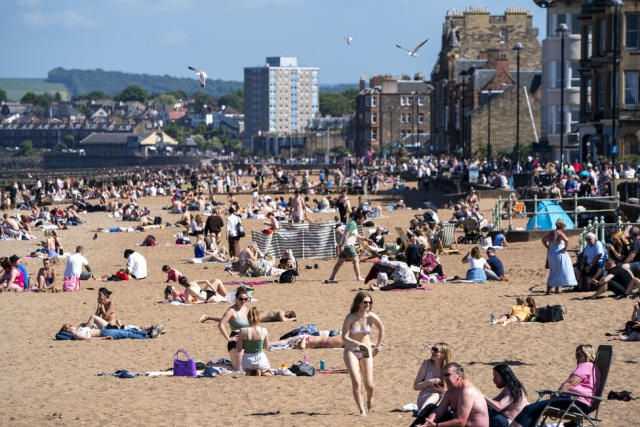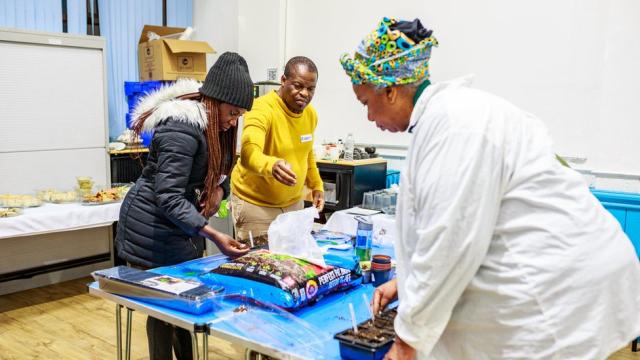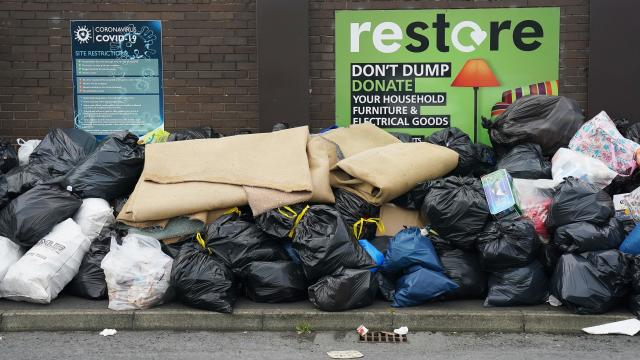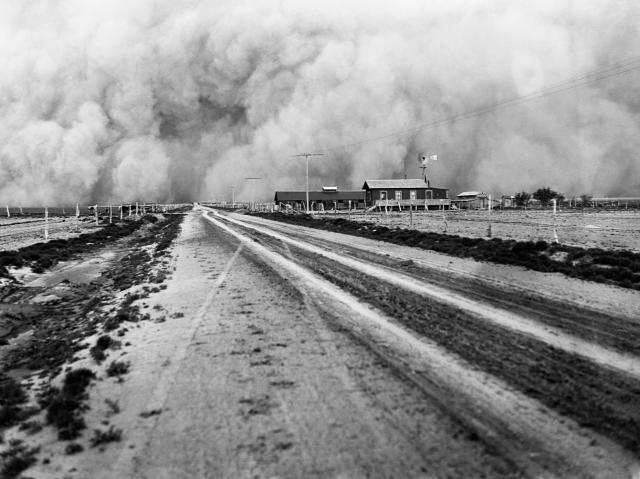Science Daily News | 13 Jun 2023

Views (158)

SpaceX launch gives a big sendoff to Starfish Space’s satellite docking craft
A well-traveled SpaceX Falcon 9 rocket today launched dozens of satellites, including an experimental docking craft created by a Seattle-area startup called Starfish Space. Starfish Space’s Otter Pup spacecraft was one of 72 payloads that were deployed into low Earth orbit after the launch of SpaceX’s Transporter-8 satellite rideshare mission from California’s Vandenberg Space Force Base. Liftoff came at 2:35 p.m. PT, just hours after SpaceX launched 52 Starlink internet satellites from Cape Can

The experiment is a group effort: The Otter Pup spacecraft was built for Starfish Space by Astro Digital. The propulsion system was provided by Exotrail. Redwire’s Argus camera hardware will be used for relative navigation, with guidance provided by Starfish’s Cetacean computer vision system and its Cephalopod trajectory planning software. Honeybee Robotics, a Blue Origin subsidiary, supported development of Starfish’s Nautilus capture mechanism.
Starfish Space co-founder Austin Link told GeekWire that the Otter Pup launch “is the beginning of a journey that we’ve now been working toward for most of our company’s existence.”
“It’s going to be a big challenge to successfully dock, but if we end up being successful, we believe the ability to affordably and safely interact with other objects in space opens up a new paradigm for how humans can operate in the universe,” Link said in an email exchange.
It will take months to gauge the Otter Pup’s level of success. “Between commissioning, checkout testing, some long-range rendezvous, and calibration we’re projecting internally that it won’t be until Q4 this year that we get the chance to dock,” Link said.
Otter Pup is meant to blaze a trail for Starfish Space’s full-scale docking craft, known as the Otter. Link said the specifics relating to future missions will depend on the results of the Otter Pup experiment, as well as the outcomes from a series of conversations with potential customers.
“At a high level, the Otter Pup is designed to be a springboard to full Otter missions that provide value to customers through satellite life extension and end-of-life disposal,” he said. “We’re always trying to chart the most efficient paths to a capable and reliable Otter.”
Starfish Space was founded in 2019 by Link and Trevor Bennett, both of whom previously worked as engineers at Jeff Bezos’ Blue Origin space venture.
Climate change: Gardeners growing exotic veg in Wales
One group is learning to grow vegetables relevant to global south majority groups.

What do you do when the ingredients you need to cook food from your culture cost both you and the planet?
This was one woman's dilemma who found herself feeling "like a bit of a fraud" for worrying about climate change but regularly driving about 50 miles (80km) for imported vegetables.
She has teamed up with the Soil Association to teach others how to grow vegetables such as okra and callaloo.
The Back to Our Roots classes have been so popular, more are being arranged.
Carol Adams from Aberdare, Rhondda Cynon Taf, said she was sick of travelling to Cardiff every time she wanted to cook dishes from her home in the Bahamas.
She said growing these vegetables herself was "something practical that people of colour can do to help mitigate climate change".
"If you live in the valleys like I do, and you want vegetables that are culturally relevant to me, the foods I enjoy eating and are part of my heritage, I've got to hop in my car and go to Cardiff to buy them.
"You cannot find the stores in Aberdare," added Ms Adams.
Ms Adams said she had never seen callaloo - a type of dark green leafy vegetable similar to kale or spinach - sold anywhere in Wales, but the group is growing it.
"Chillies are more expensive, the kind of chillies from home, they skyrocketed.
"There are times when you go into the big Tesco in Cardiff and you do see a pack of okra but they're tiny little packs of maybe 10 okra.
"Who the heck can make a dish with 10 okra? So they're expensive to eat because you've got to buy so many packs," she said.
The Soil Association is a UK-wide charity which aims to protect nature by transforming how people eat and farm.
There were 20 members in the project's first group, eight in the second, and a third cohort is planned for north Wales.
A UK-based network with over 100 members has also been set up to share information, seeds and lived experience to create a library of expertise for anyone wanting to give it a go.
To find out the climate impact of what you eat and drink, choose from one of the 34 items in our calculator and pick how often you have it.
Design by Prina Shah, development by Felix Stephenson and Becky Rush.
People are encouraged to grow the crops in whatever space they have, from windowsills to garden pots.
Justina John, 43, from Cardiff, said growing crops from her childhood in Tanzania has been emotional for her.
"It brings back memories, so it gets back to our roots. Also it's tackling the cost of living.
"Okra used to be £4 a portion and now it's gone up to £8. It's crazy," she said.
Her two sons have loved helping to care for the plants and Ms John has told them stories about growing up and being in charge of the family vegetables.
"In Tanzania, as a girl when you're growing up you have chores," she said. "The planting is one of the chores that I chose.
"I didn't like washing clothes, my thing was watering the plants. I used to go all over the streets to look for new seeds."
Ms John said when she moved to Wales she stopped gardening, and "didn't think the British climate could actually sustain" the plants she used to grow.
When she realised it was possible, she said it took her right back to her childhood.
"I have to look after these plants with my whole heart because I feel like like my mum will be looking at me," she said.
Her children are as excited as she is.
"It's like we have a pet.
"The first time around, they overwatered them and I had to start again.
"So now they're very careful."
Jodie Jamal, 37 from Cardiff is also growing with the group.
"I've got quite a few things growing at the minute: cucumber, okra, tomatoes, different varieties of chilli, aubergine, courgettes and rhubarb.
"I think we've lost touch with eating seasonally, we expect to have fruit and veg all year round, which isn't sustainable.
"It's just great to be stripping back and just understanding the seasons.
"I think in line with the cost of living I think it is going to be a benefit if you can just grow your own food get the costs down."
She also said growing her own vegetables was better than relying on her local supermarket.
"I've noticed not only is the stock diminishing, the freshness of the food isn't great and not only that, the prices are just astronomical," she said.
She was also "blown away" meeting people from different cultures and backgrounds.
"It was really enriching not only to learn about how to grow our own food, but to also get together as a community to learn about other people's cultures and what they eat with what we're growing," added Jodie.
Towns set for 'flexible plastic' recycling scheme
A new £200,000 plastic recycling scheme could trial in Reading next month.

Recycling for plastic bags and wrappers could be coming to thousands of homes as part of a £200,000 trial.
Homes in Reading, with Bracknell and Wokingham to follow, will soon be allowed to recycle "flexible plastics" as early as 10 July, according to the council.
People will be able to recycle previously unrecycled materials including sweet wrappers, bubble wrap, and cling film.
The scheme may expand to cover 20,000 more homes across the area if it is a success.
Councillors from Reading, Bracknell Forest and Wokingham Borough councils are expected to vote on whether to approve the scheme on 15 June.
The three councils jointly run a waste disposal scheme, known as re3, covering all three boroughs.
The new recycling scheme is part of a national research trial run by the FlexCollect project, a £2.9m pilot that recycles flexible plastic packaging across the UK, and supported by the government.
Organisers chose re3 to be part of the trial because of Reading’s urban nature.
Although Reading was chosen to take part in a national trial, the government has indicated that it could be made mandatory for councils to recycle plastic bags and wrappers from 2027.
Items will go in blue, single-use bags sent out by Reading council and thrown out with the rest of the recycling.
Rubbish collectors will then separate the blue recycling bags and send them off to a national processing centre.
Despite the expansion, plastic straws and cutlery, pill packs, disposable face masks, and foam or polystyrene won’t be included in the scheme.
The project will also come with £200,000 worth of funding to cover the costs of implementing the scheme.
However, Re3 is not currently prepared to process flexible plastics itself. It says converting its recycling plants could cost “upwards of £2 million.”
Reports say officers have been assured that FlexCollect will not profit or gain a commercial advantage over competitors through running the trial research.
Here's why the 1930s Great Plains Dust Bowl drought-disaster hit so hard and lasted so long, and why it could happen again
The dust was toxic. Hundreds of people died from the "brown plague," which was basically dust-induced pneumonia.

In the early 20th century, farmers across the Great Plains harnessed new technology to cash in on a huge demand for wheat.
But over-farming led to the removal of prairie grasses which had kept the topsoil in place.
For years, the region was bombarded by monster dust storms called "black blizzards" that sometimes buried entire houses in grit.
For almost 10 years, the Great Plains became a desert wasteland.
During the 1930s, after an intensive period of over-farming, dust storms regularly wreaked havoc, blanketing towns and farms in grit, destroying crops and making people sick.
The drought and storms led to one of the largest mass migrations in a short period of time in US history.
When it was over, better farming practices were instituted to ensure it never happened again. But even so, in 2020, new research found that the heat waves which caused the dust bowl were more than twice as likely to occur as in the 1930s.
Here's what it was like and why it could happen again.
It all began with wheat. In the late 19th and early 20th century, thousands of farmers moved to the Great Plains, a stretch of arid land once covered in native grasses that stretched across much of middle America from Texas to Montana.
The farmers were enticed by new federal laws to buy land off developers who had divided massive ranches up for farming.
In the following years, they planted millions of acres of wheat and corn.
Demand for crops, wheat in particular, was high in the 1920s due to World War I. Farmers harnessed new technology like tractors to get the most from their land. At the same time, the weather provided the region with plenty of rain.
Until then, prairie grasses had kept topsoil in place, but with all of the intensive farming and over-ploughing, the soil became less stable.
Everything came to a head in the early 1930s when the Great Depression hit alongside a severe drought. Suddenly the demand for wheat had disappeared and the overworked land was ruined.
Beginning in 1931, massive dust and dirt storms called "black blizzards" or "dusters" monstered the land and the people who lived there.
In 1932, fourteen dust storms were reported. By 1933 it was up to 38. The storms rolled through towns "like bowling balls," according to a report by the New York Times.
When a dust storm hit, day turned to night.
Farms were buried in dust…
Livestock was killed…
And farmers were forced into bankruptcy when their prayers for rain went unanswered.
The once beautiful plains became a wasteland.
Some people tried to carry on as best they could.
But the dust was toxic. Locals who breathed it in dealt with asthma, influenza, bronchitis and terrible coughs. Hundreds of people ended up dying from the "brown plague," which was basically dust-induced pneumonia.
The storms were relentless and appeared, from the ground, inescapable.
As if things weren't bad enough, the period brought masses of grasshoppers and jackrabbits, which finished off much of what remained of the crops.
Up to 2.5 million people left the Great Plains, in one of the country's largest ever mass migrations over a short period of time.
But often, things weren't much better wherever they ended up.
About 200,000 people went to California, where they were treated poorly and called "Okies."
It wasn't just the Great Plains that were struggling. In 1934, more than 75% of the US was hit by a drought. The drought hurt 27 states. Here's Chicago blanketed under a dust cloud several miles long in May of that year.
But the Great Plains experienced the worst of it. In 1934 and 1936, the region suffered two of the most intense heatwaves in US history.
In Iowa the temperature hit 118 degrees in 1934, while Oklahoma, Kansas, South Dakota, and North Dakota all hit 120 degrees in 1936.
Climate scientists have found heat and droughts go hand in hand.
University of Brussels climate scientist Wim Thiery told Yale Environment 360, "Dry soils have this exacerbating effect. There is this positive feedback where dry soils lead to more warmth."
If soil is damp then the moisture evaporates under hot sunlight, but when there's no moisture the land heats up easier, meaning more droughts, which in turn means more heatwaves.
Under President Franklin D. Roosevelt the government had been working to help the region during these years.
The government's initiatives included federal aid, limiting banks' ability to evict farmers, relief funds, new employment opportunities, buying cattle off farmers.
It also took over millions of acres of land and converted it into carefully monitored grazing districts.
But the drought and the storms continued. In 1935, the "Black Sunday" dust storm hit the High Plains. It rolled across the country to cities on the East Coast and the Atlantic Ocean. It is considered the worst storm of the period.
Even locals who had lived through countless dust storms thought it was the end of the world.
One AP reporter who was trapped in a car overnight after failing to outrun it coined the term "dust bowl." He wrote, "Three little words — achingly familiar on a western farmer's tongue — rule life today in the dust bowl of the continent … 'if it rains.'"
Black Sunday triggered a national response. Within a fortnight, Congress had called soil erosion "a national menace." It established a new service focused on soil practices, including advocating for rotating crops, terracing, and contour plowing.
In 1937, the government also launched Shelterbelt Project, a planting project which went for 12 years and cost about $75 million. The aim was to plant up 100 miles of plains between Texas and Canada.
By 1938, due to all of the work that had been done to the land, air-borne soil was down by 65%. The following year in 1939 it finally rained.
The drought was finally over.
From then on, farming practices were generally improved. Farmers knew to irrigate their crops so they could handle droughts better.
And it seemed like the Dust Bowl was a period of US history that no one would ever forget—with iconic photos of the struggle, including this one by Dorothea Lange of Florence Owens Thompson—but that would never be repeated.
Even so, in 2020, new research found—despite all of the improved farming practices—that the heat waves which caused the dust bowl were more than twice as likely to occur as in the 1930s, due to global warming.
The reason it hadn't already happened was because irrigation had kept the land damper and cooler than in the 1930s.
Farmers on the Great Plains now rely on water from underground aquifers including the Ogallala Aquifer—one of the world's biggest aquifers—for their irrigation. Up to 46% of irrigated farmland in the area use it.
This aquiver is being overdrawn and some experts have said 70% of it might be used up with the next 50 years.
When the groundwater is depleted a similar period could begin.
US Geological Survey hydrologist Virginia McGuire, who monitors the Ogallala Aquifer, told Yale Environment 360 that water levels in some areas were less than half the size they were 100 years ago.
She said, "If that trend doesn't change, at some point there's going to have to be a reckoning."
A supernova that exploded in a nearby galaxy is one of the brightest in a decade. Here's how to see it.
The supernova, named SN 2023ixf, is located 21 million light-years away. It should remain visible with the aid of a telescope for at least a few months, astronomers said.

A supernova has exploded in the Pinwheel Galaxy 21 million light-years away.
Named SN 2023ixf, it sets itself apart by being one of the brightest seen in a decade.
It is so bright that it is visible from Earth. Here are some tips to see it from your backyard.
A supernova exploding in a nearby galaxy is providing an unexpected spectacle for amateur astronomers.
"It's one of the closest supernovae of our lifetimes, and it was caught very early," Dan Perley, an astrophysicist at Liverpool John Moores Observatory, told Insider.
Here's how you can witness first-hand this rare cosmic event, using a simple telescope.
Because of this, the blast was bright enough to be first spotted by an amateur astrophotographer, Koichi Itagaki, on May 19.
While scientists race to collect as much information as possible from this supernova, backyard astronomers can participate by turning their telescopes to the sky to see it with their own eyes.
The supernova is expected to blaze in the sky for at least a month, and it should visible with a fairly standard telescope, said Perley.
"The magnitude of the supernova is about 11.5 at this time. This is accessible in principle with a telescope of 6 inches (15cm) from a good enough site, seen through an eyepiece," said Perley.
Head to a dark spot, away from city lights, with no moon in the sky for best visibility, he said. The supernova will appear as a "white point of light," so bring a finder as it can be difficult to spot it among the stars, he said.
The galaxy the supernova can be found near the Big Dipper. Look for seven stars that appear to make up the shape of a saucepan, with three making up the handle, and four stars creating the bowl shape.
The Pinwheel Galaxy is located close to two of the stars in the handle of the Big Dipper.
"Seen from a dark site with a good telescope, it will also be superimposed on the outer part of the wispy, diffuse spiral galaxy that it exploded inside of," said Perley.
"If you have the ability to attach a camera capable of taking long exposure to the telescope, this also allows a much deeper and clearer picture than looking through a telescope with the eye alone," he said.
Scientists are scrutinizing this supernova because it happened so close to Earth and was spotted so early, Perley said.
"These supernovae come from massive stars that the core collapse and explodes, we know those basics well," said Perley.
"What we don't know so much is exactly what happens right before that core collapse and explosion," he said.
What Perley and other astronomers are trying to understand is whether the star ejects material before the supernova explodes, a type of shell that could be ejected during this very unstable pre-explosion phase.
Because this supernova is so close, it is a favorite of amateur astrophotographers, which means that astronomers have been able to parce amateur pictures of the galaxy that were even earlier than Itagaki's shot, providing information about the first 24 hours after the blast.
It's also close enough for scientists to pick up on data beyond the ultraviolet, optical, and infrared wavelengths, such as X-ray and radio, which are difficult to pick up for supernovae at greater distances, said Perley.
Scotland records hottest day so far as heatwave hits
Threave in Dumfries and Galloway reaches 30.1C as the Met Office confirms that Scotland is experiencing a heatwave.

Scotland has recorded its hottest day of the year so far, with Threave in Dumfries and Galloway reaching 30.1C.
The Met Office confirmed the country is now officially experiencing a heatwave after an extended period of hot weather.
A number of weather stations across the country have reached 25C or above for three days in a row.
Scotland's previous hottest day of 2023 was recorded in Auchincruive, South Ayrshire on Saturday.
The mercury hit 29.8C, and the warm weather is set to continue for the next week.
Hot spots across the country include Eskdalemuir in Dumfries and Galloway and Aviemore.
While people have enjoyed the rising temperatures, firefighters have warned of an increased risk of wildfires.
It has extended the yellow warning for thunderstorms in the Highlands and western Scotland until Tuesday at 21:00.
The B863 near Kinlochleven was blocked by a landslide following a downpour on Monday night.
And the railway line south of Inverness was closed as a precaution while engineers dealt with flooding in the area.
Network Rail Scotland said the line near Tomatin would need to be inspected before it could be opened to trains.
Sepa has also warned of significant water scarcity in the Loch Maree area of the Highlands, and moderate scarcity in Ness in the Highlands and Esk in Dumfriesshire.
On Sunday, Auchincruive was the only place in Scotland that met technical heatwave conditions.
However, the Met Office does not confirm heatwaves based on individual stations.
Threshold temperatures must be recorded across a wider number of weather stations to be considered a heatwave.
And on Monday, a number of weather stations met the threshold of three days at 25C or above.
Cooler temperatures have been recorded across northern Scotland.
Tourists from relatively warmer countries have called the hot spell "very pleasant".
Lisa Merrifield and her family are visiting Scotland on holiday from their home in San Antonio, Texas.
"A heatwave for us is multiple days over 100F (37C)," she said.
"This is bearable, it's been very pleasant while we've been here."
"We would trade this for our summer," added Derek Charette. "It's hot every day."
Sam Kidner and Naomi Brown from New Zealand said the Scottish heatwave was far more humid than a New Zealand heatwave.
"It's not hugely hot compared to what we're used to," said Naomi.
"It's definitely more humid," said Sam. "It's warm, so we're sweating a little bit here.
"I'm looking forward to the rain. A heatwave for us is a bit less humid so it's definitely more comfortable."
A heatwave is an extended period of hot weather exceeding the expected conditions of the area at that time of year.
In the UK, a location must record daily maximum temperatures which meet or exceed the heatwave temperature threshold for that time of year at least three days in a row.
Heatwaves are extreme weather events, but research shows that climate change is making these events more likely.
It is not possible for meteorologists to tie single weather events such as the current heatwave to climate change.
But experts are in no doubt that climate change is causing global temperatures to rise.
Britain has been slowly getting warmer since the 19th Century. In the past three decades, the UK has become 0.9C warmer.
The 10 hottest years since 1884 have all happened since 2002. And none of the coldest years has been recorded this century.
Scotland experienced two heatwaves last year - in July and August.
0 Likes
